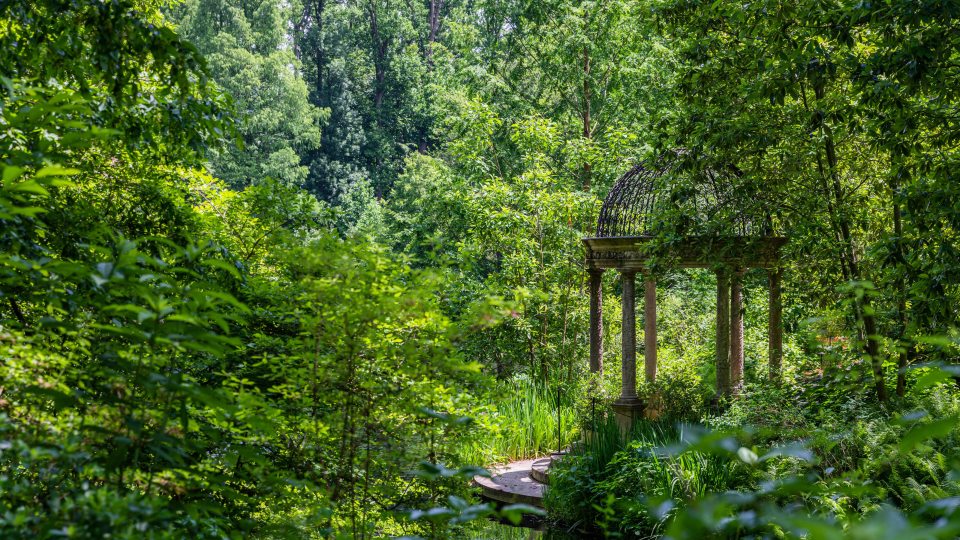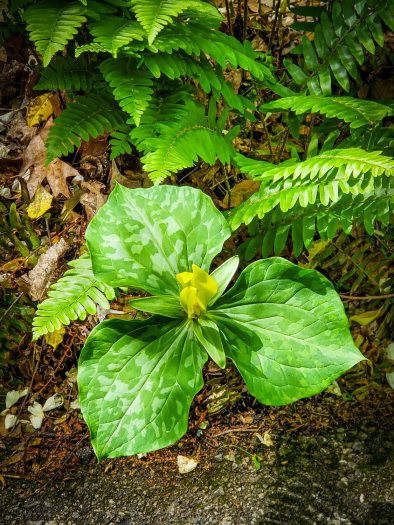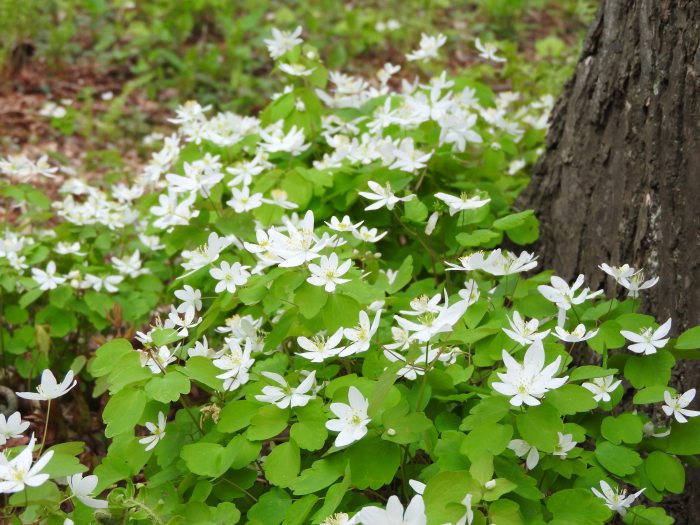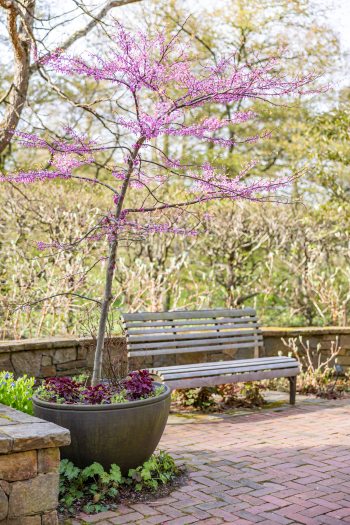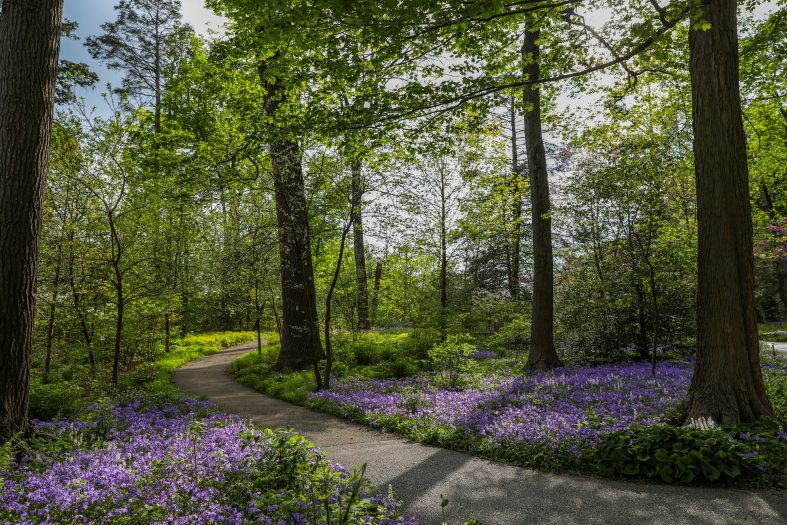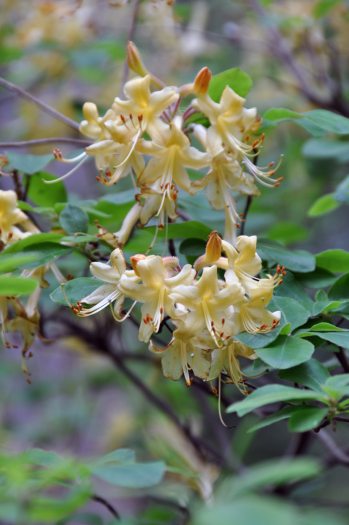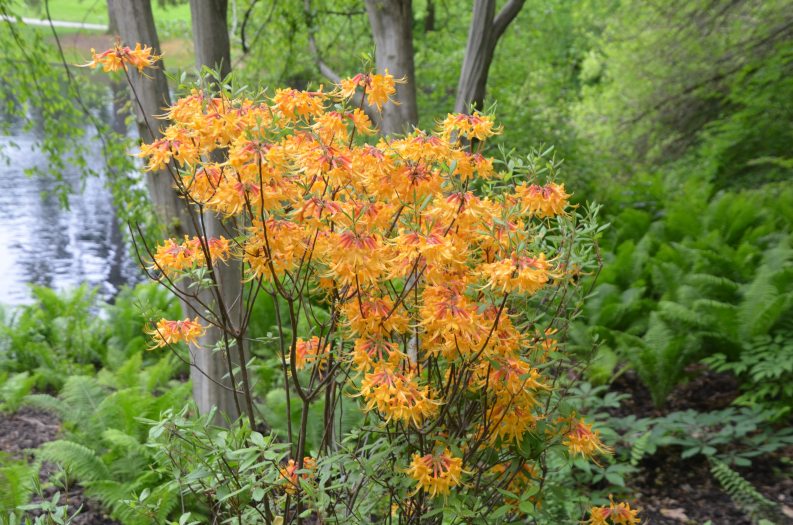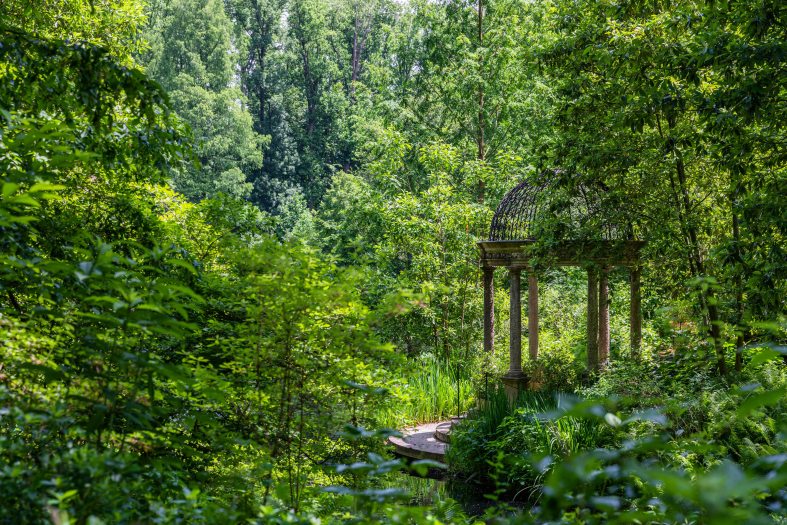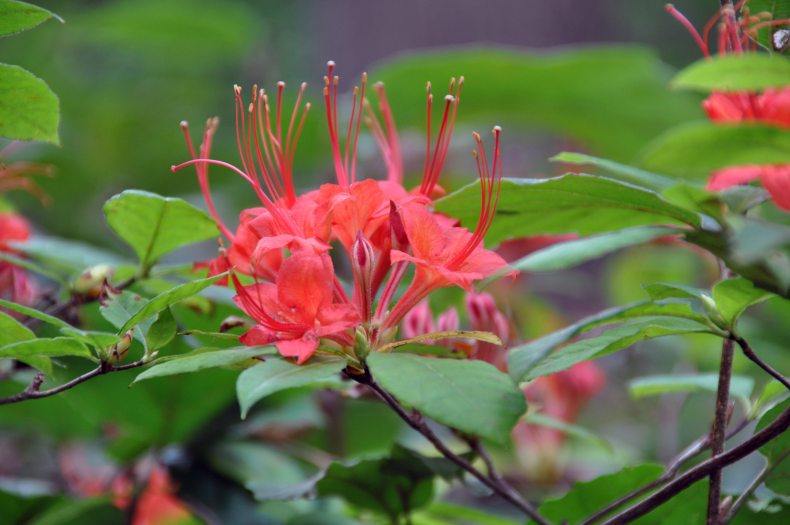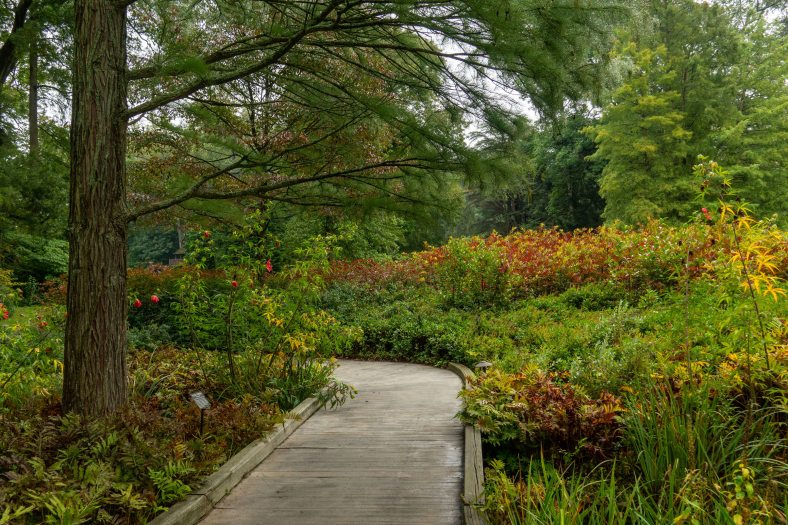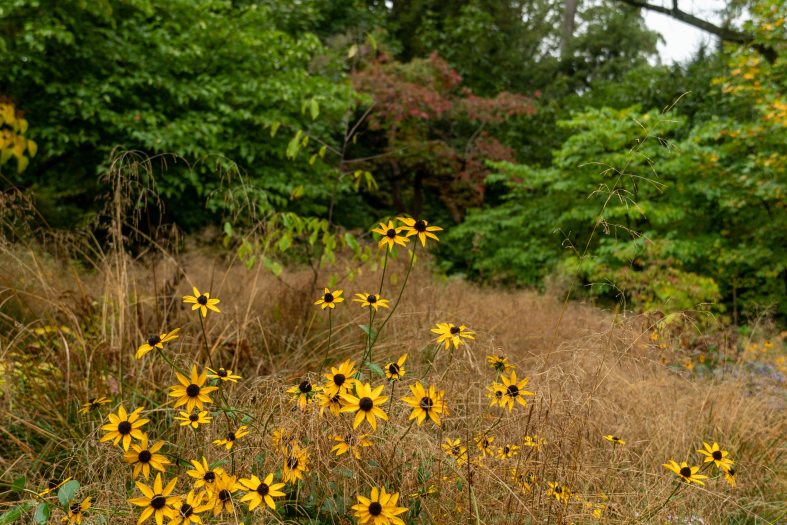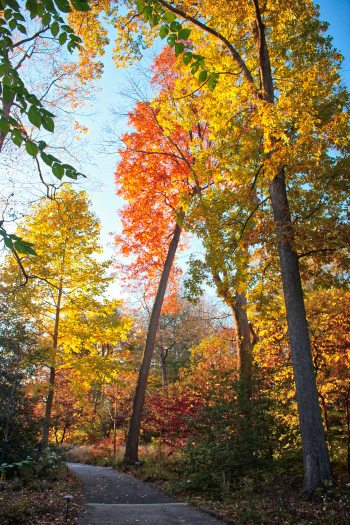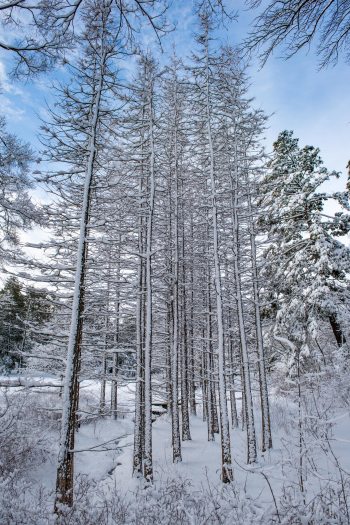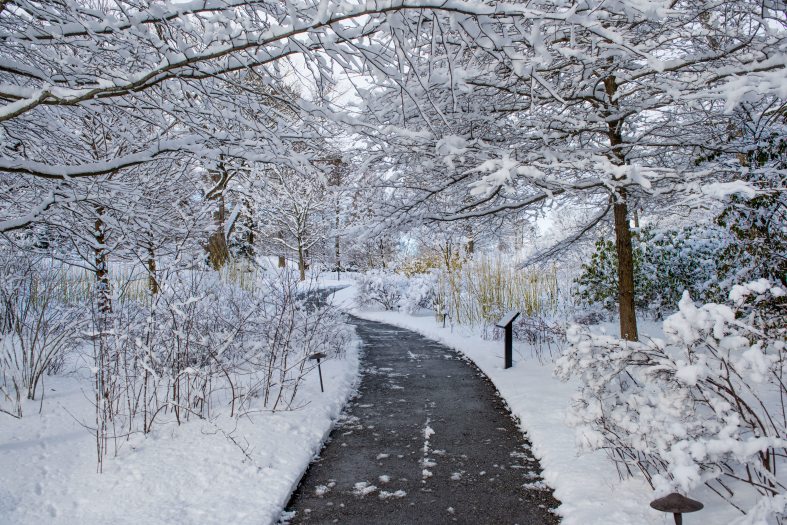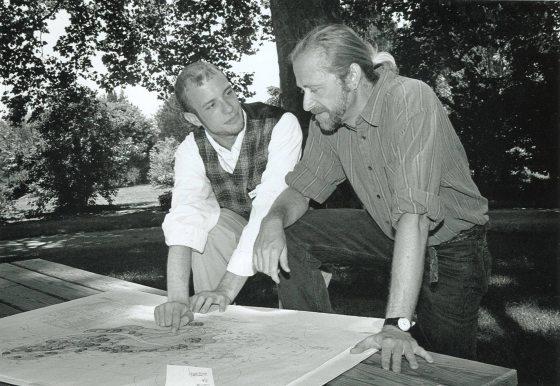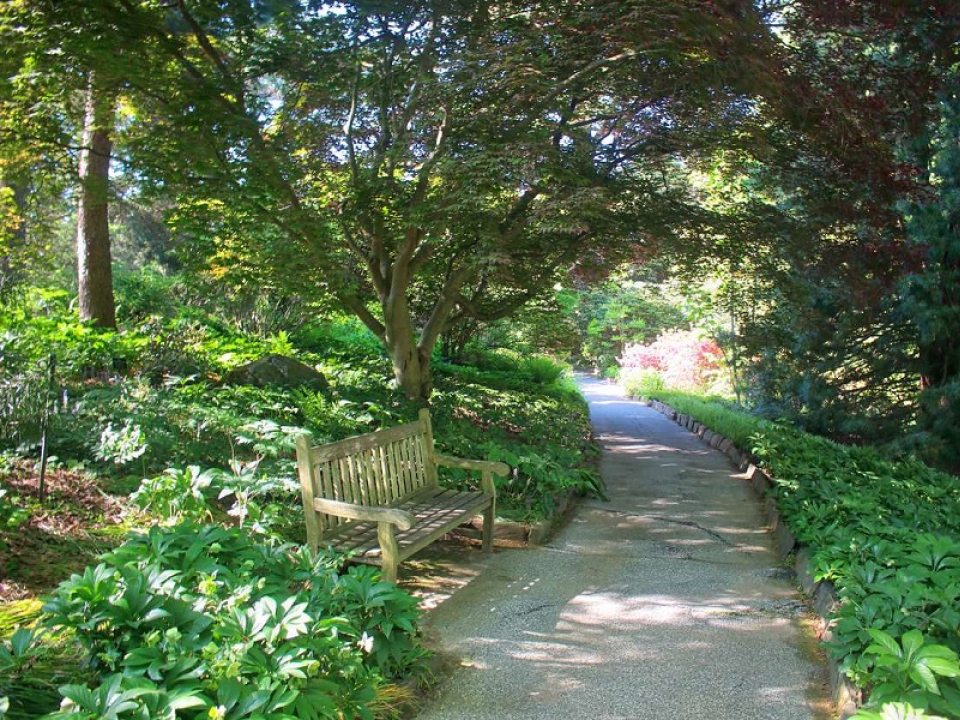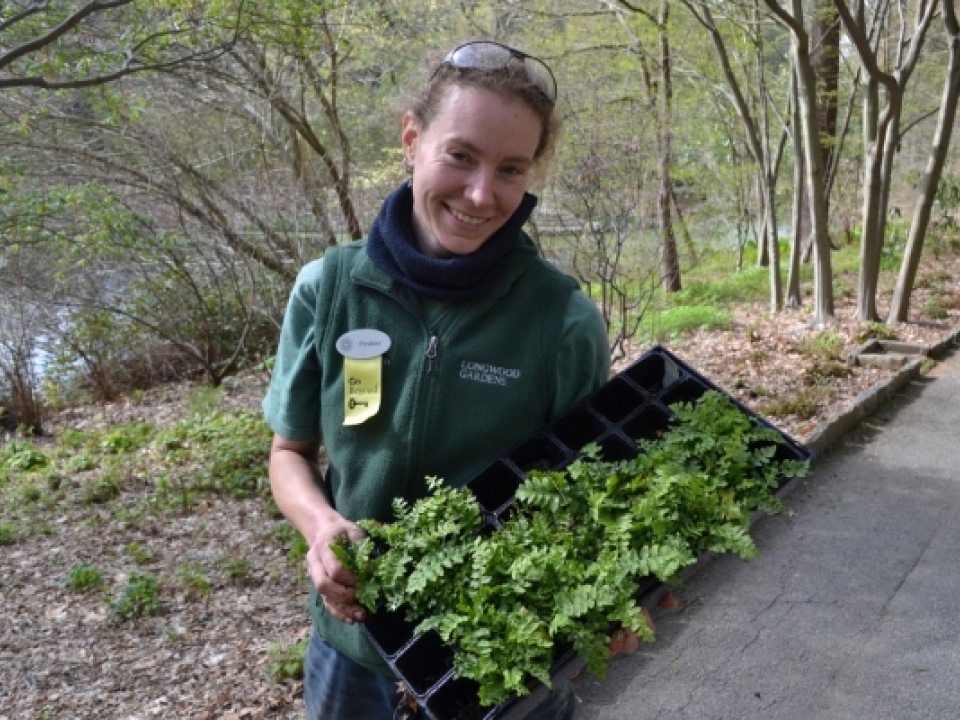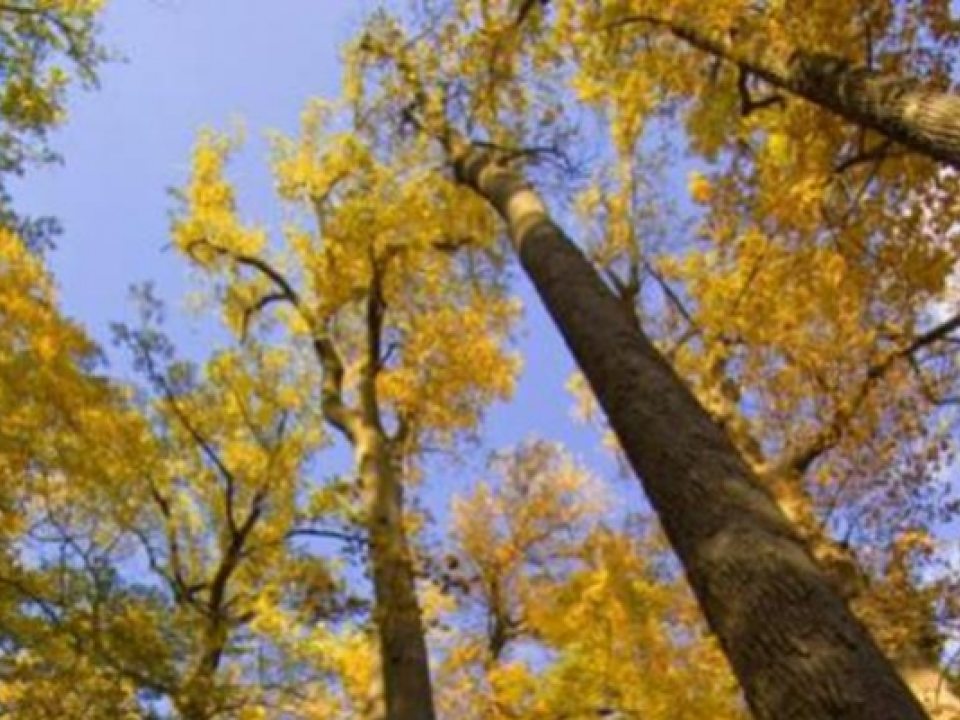Enter the cool beauty of Peirce’s Woods, where you’ll notice a softening of sound, light, and color. Mighty oaks, ashes, maples, and tulip-trees tower above an award-winning garden, designed by W. Gary Smith, which focuses solely on native plants. Collection highlights include 200 species and cultivars of small trees, shrubs, and groundcovers, offering seasonal interest from spring through fall.
About This Garden
The central design theme is large horizontal sweeps of groundcovers, which balance the strong vertical lines of the mature tree trunks. Early spring is a magical time, when most of the woodland flowers are in bloom, including white foam-flowers (Tiarella), ‘Sherwood Purple’ creeping phlox (Phlox stolonifera), and dwarf-crested iris (Iris cristata). Fragrance plays a role in this garden as well, including the claret-hued blooms of the Carolina allspice shrub (Calycanthus floridus) and many of the azaleas, for which this garden is known. In the fall, we like to think that Peirce’s Woods hosts a second spring, when goldenrods and asters bloom in time with the changing leaves.
Peirce’s Woods continues to evolve under the leadership of our horticulturists, with meticulous maintenance of the existing displays as well as clever design shifts to account for the ever-growing canopy of our storied trees.
